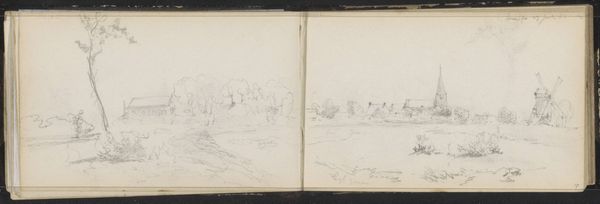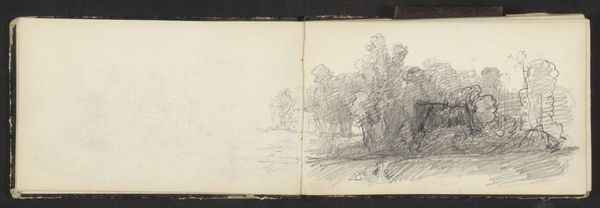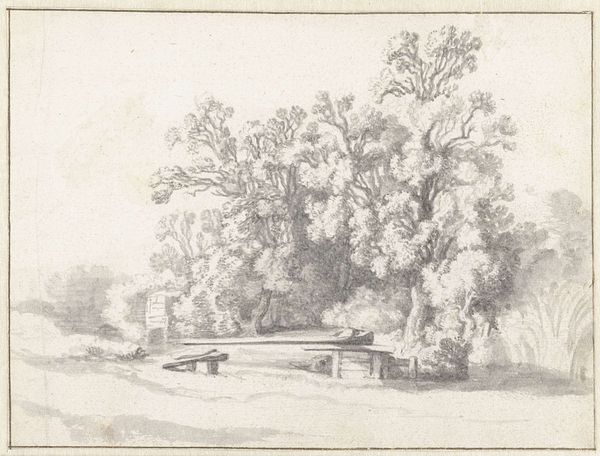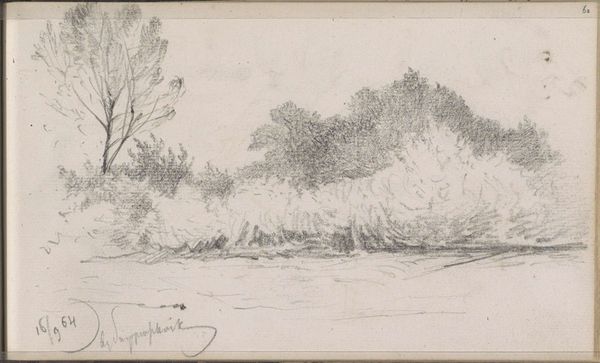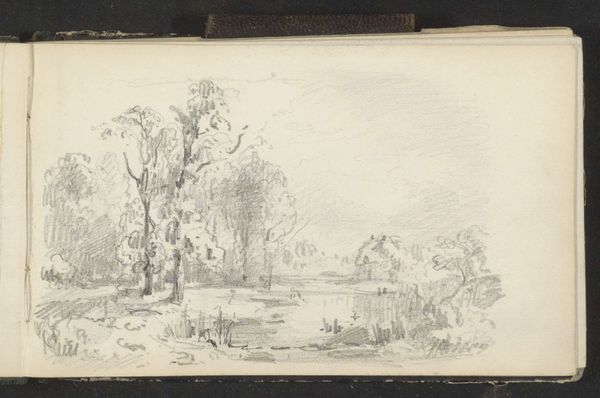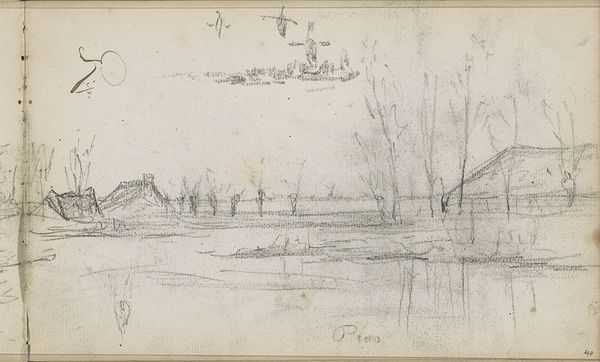
drawing, pencil, pen
#
drawing
#
dutch-golden-age
#
pen sketch
#
landscape
#
figuration
#
pencil
#
line
#
pen work
#
pen
#
realism
Dimensions: height 158 mm, width 247 mm
Copyright: Rijks Museum: Open Domain
Editor: This is Willem Cornelis Rip's "Polderlandschap met een rivier, molen en boerderij," from 1877. It's a delicate pen and pencil drawing of a Dutch landscape. I find the stark simplicity quite compelling. How do you interpret this work, especially given its historical context? Curator: What strikes me is the apparent neutrality, belied by the reality of the Dutch landscape in the late 19th century. These polders, meticulously drained and managed, speak volumes about human intervention and control over nature. Rip’s focus on the working landscape invites questions: Whose labor shaped this land? Who benefitted? Editor: So, beyond a picturesque scene, you see a commentary on labor and land ownership? Curator: Absolutely. Consider the figure walking the path. Is she simply a local resident, or does she represent a deeper connection to the land, a historical presence maybe? This period also saw increasing industrialization in the Netherlands; does this landscape romanticize a pre-industrial past, or critique the encroachment of modernity? The inclusion of the windmill in the distance suggests both progress and potential displacement. Editor: That's a perspective shift I hadn't considered. The windmill, usually a symbol of Dutch ingenuity, here takes on a double meaning, representing potential disruption. Curator: Precisely. Art is never created in a vacuum. By examining the social and political climate of the time, we gain a much richer understanding of its intent. It allows us to engage in critical dialogue about the choices artists make and the messages they subtly—or not so subtly—convey. Editor: I'm going to look at landscape art a little differently going forward, thinking about the people whose lives shaped these spaces. Curator: Excellent! This close looking, situated within critical theory, provides the pathway to a richer understanding of not only art, but also the socio-political issues intertwined within artistic expressions.
Comments
No comments
Be the first to comment and join the conversation on the ultimate creative platform.



